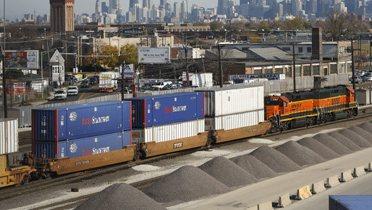Saturday night’s NCAA Final Four showdown between Louisville and Kentucky was hard-fought between two rival schools and two rival coaches. But their historic on-court competition stands in stark contrast to a new partnership being forged by their home metro areas. Led by mayors Jim Gray and Greg Fischer, Lexington and Louisville are collaborating to compete economically so they can prosper in the global economy.
Fischer and Gray are two former-businessmen-turned-mayors who took office right at the tail of the recession. Both inherently understood that rising competition abroad required them to act boldly to innovate and grow jobs at home. It didn’t take long for these two entrepreneurial mayors to look across Interstate 64 and recognize the opportunity to bring their metro areas together in ways that will put their combined region – and assets – on the global map.
Last summer, these mayors, with their high-caliber private and public sector partners, launched the Bluegrass Economic Advancement Movement (BEAM), an effort to create a metro business plan for growth that will unify and leverage their common markets assets – such as manufacturing, university innovation, transportation/logistics – to boost the economic prospects of their two metros. To demonstrate their commitment to an historic alliance, the mayors jointly appointed Jim Host as chairman of BEAM, an influential statesman and Lexington businessman who chaired the Louisville Arena Authority.
Lexington, Louisville, and the surrounding counties represent a mega region of over 1.9 million people, roughly the size of Las Vegas, NV. Encompassing 22 counties, including the four southern Indiana counties in the Louisville metro, the BEAM region comprises roughly half of the commonwealth’s population, jobs, and economy. This makes the BEAM effort of vital importance not only to the economic prosperity of the two metros but the entire commonwealth.
To date, the region has been hard at work undertaking a rigorous market analysis of the strengths and opportunities facing their two metro areas and adjoining counties. The Bluegrass region boasts over 100,000 manufacturing jobs, anchored by global giants like GE, Ford, and Toyota. Both metro areas benefit from the UPS Air headquarters in Louisville, which provides an easy port of entry to the world for area firms and travelers. Both these assets may explain why both Louisville and Lexington are major exporters, besting the nation on their share of economic output generated by exports. And the presence of both University of Kentucky and University of Louisville helps the region attract talent, especially among skilled immigrants.
But the challenges are clear: Despite these assets, the Bluegrass region has been lagging the nation in economic output and productivity growth, and median household incomes have fallen faster than the national average. This is the right time for a forward-leaning vision and plan of action for making the Louisville-Lexington super region a true hub of manufacturing innovation and growth. Mayor Gray and Mayor Fisher, with their rare leadership and genuine friendship, are the right CEOs to drive this plan forward.
With Louisville and Lexington teaming up, the state will be the big winner, as it was in this year’s tournament.
Editor’s Note: This piece has been updated from its original version, published on March 31.






Commentary
Louisville vs. Kentucky, No More
March 31, 2012